

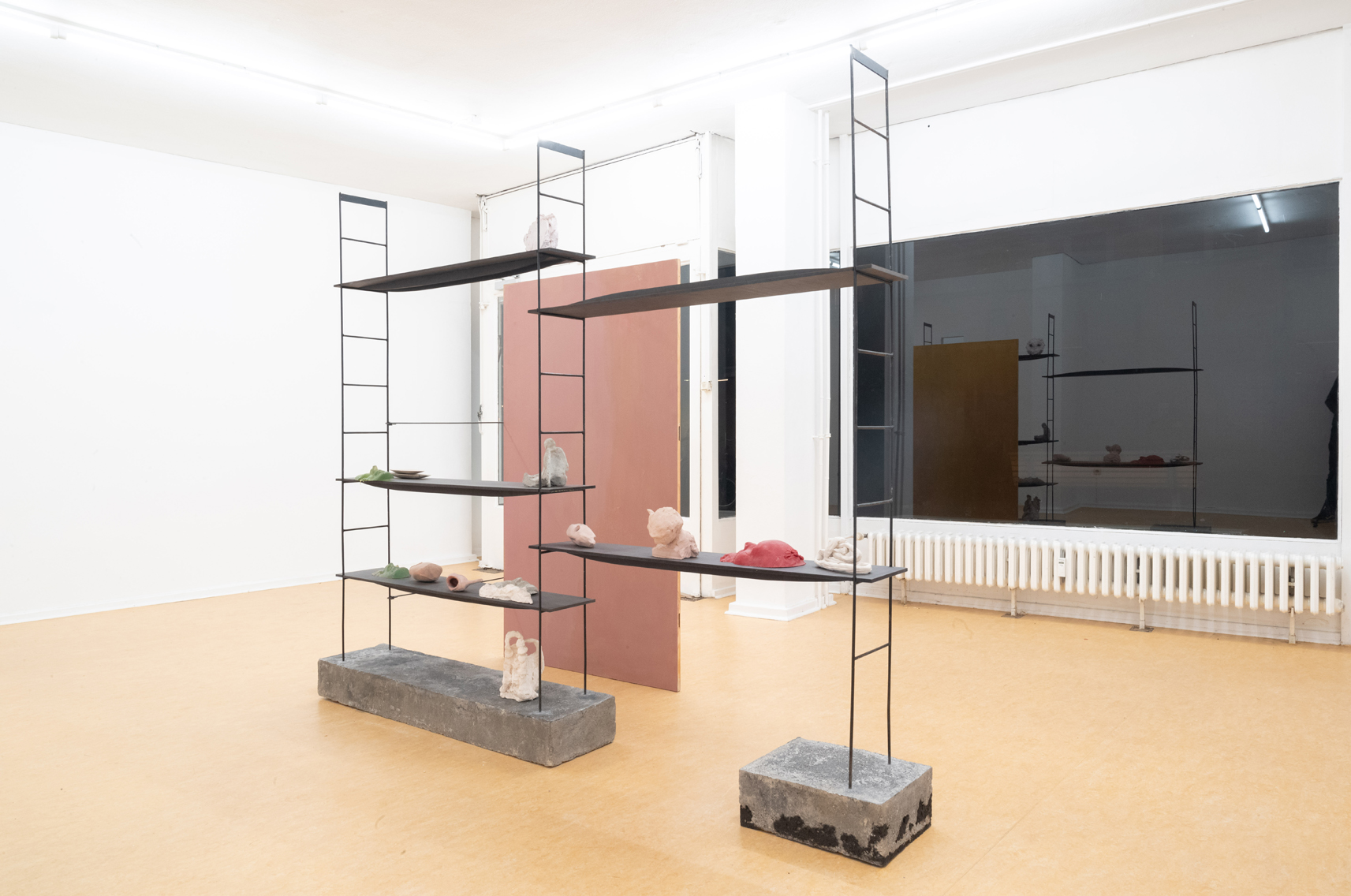
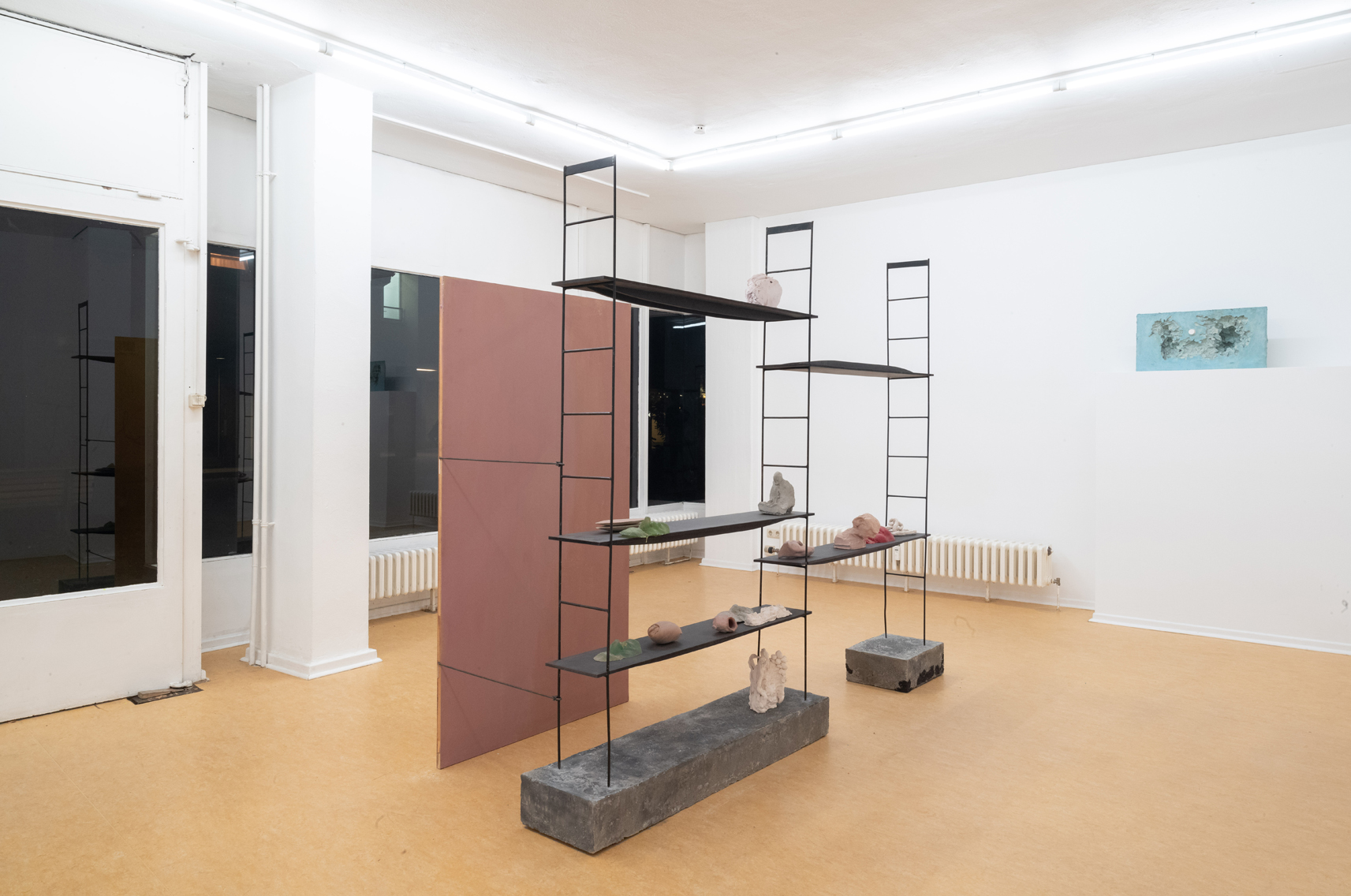
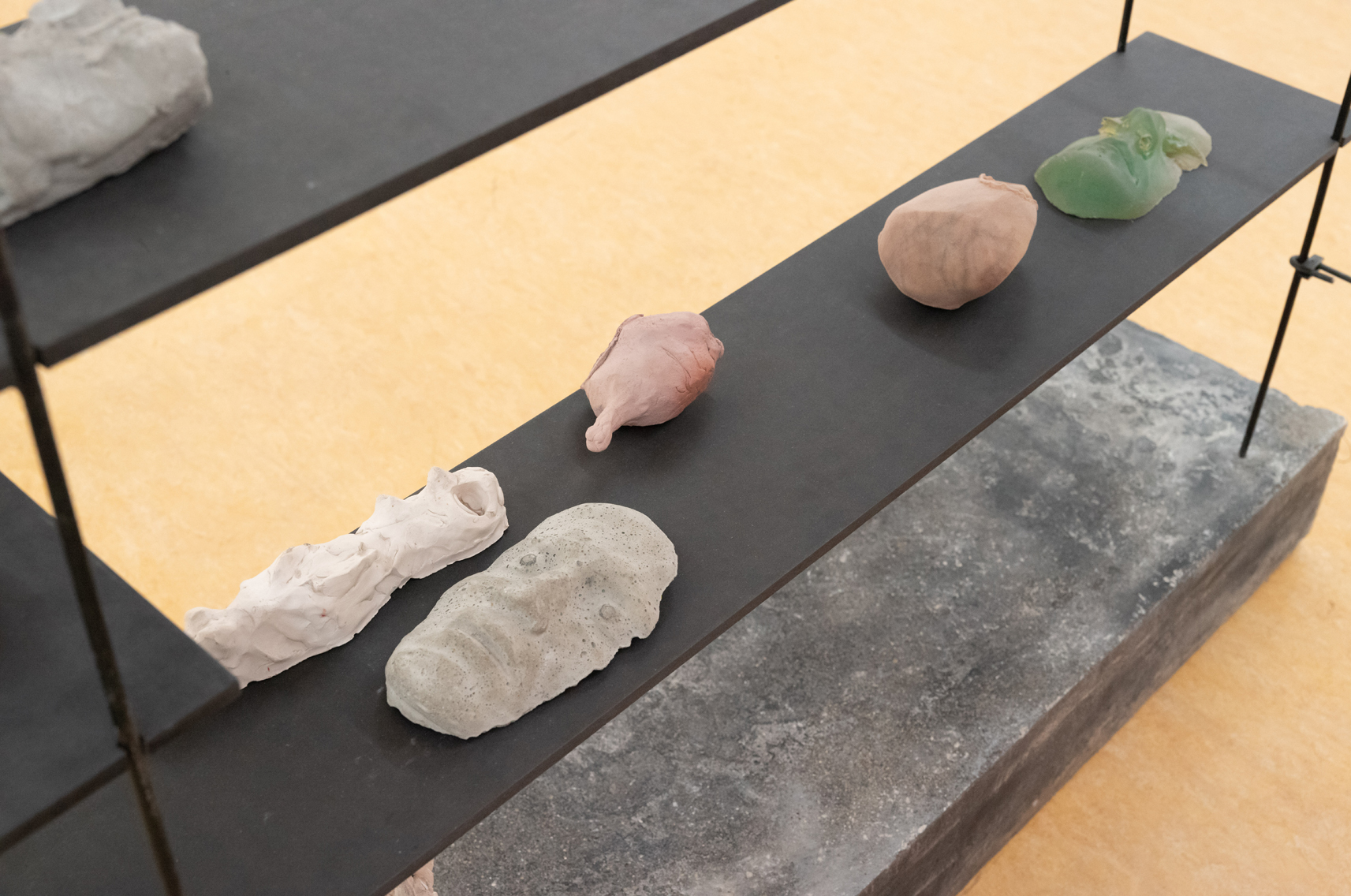
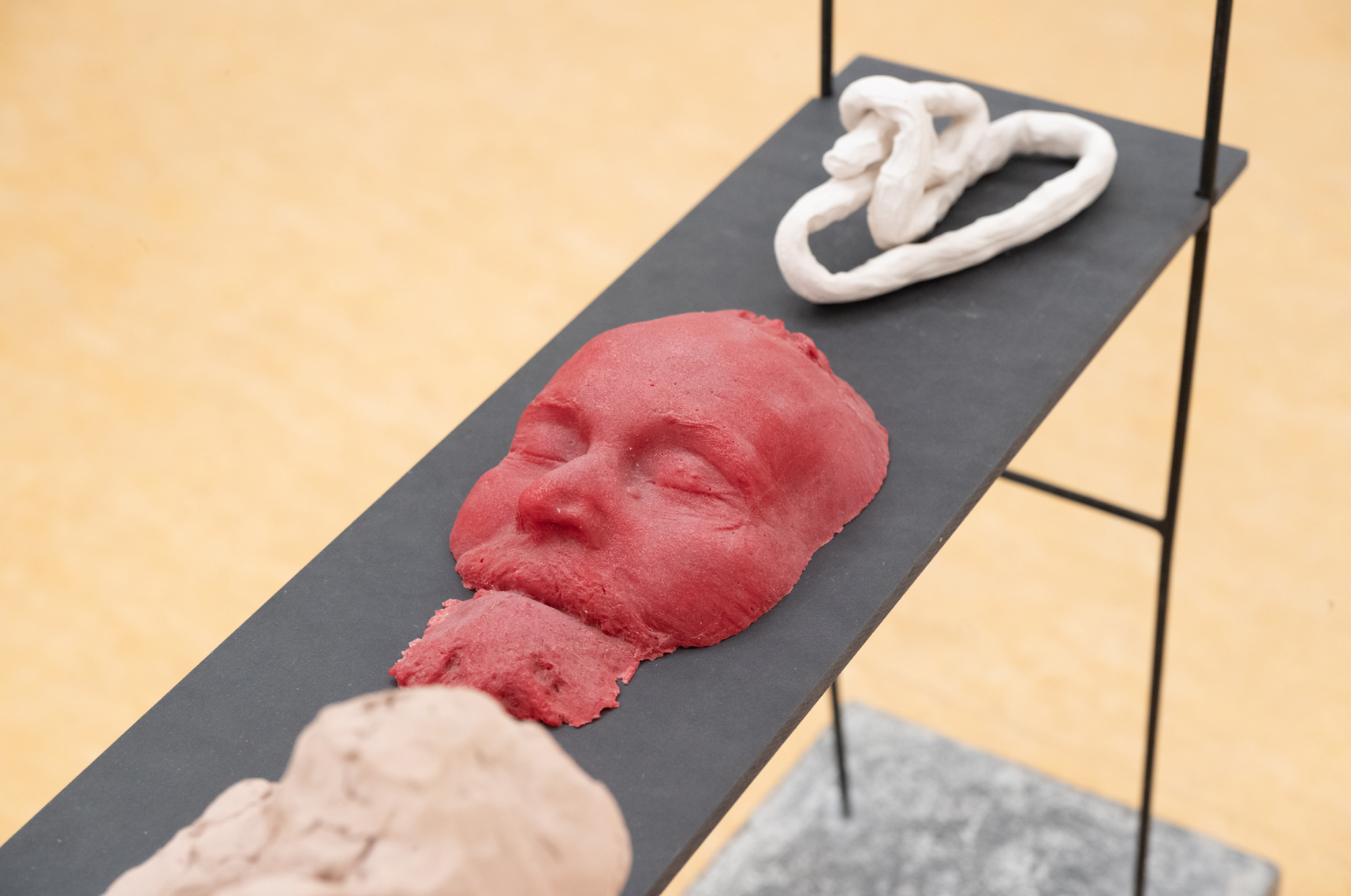
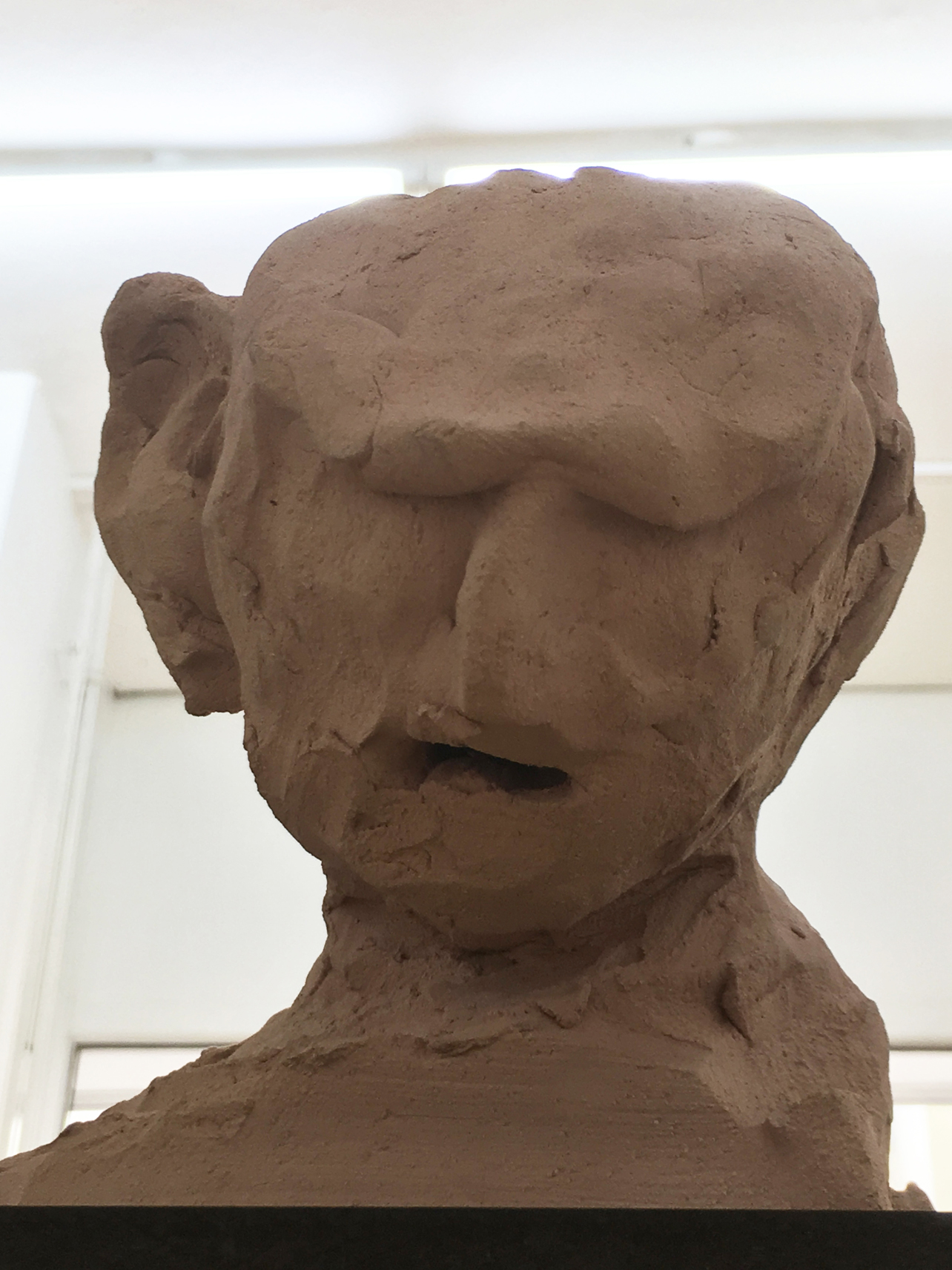
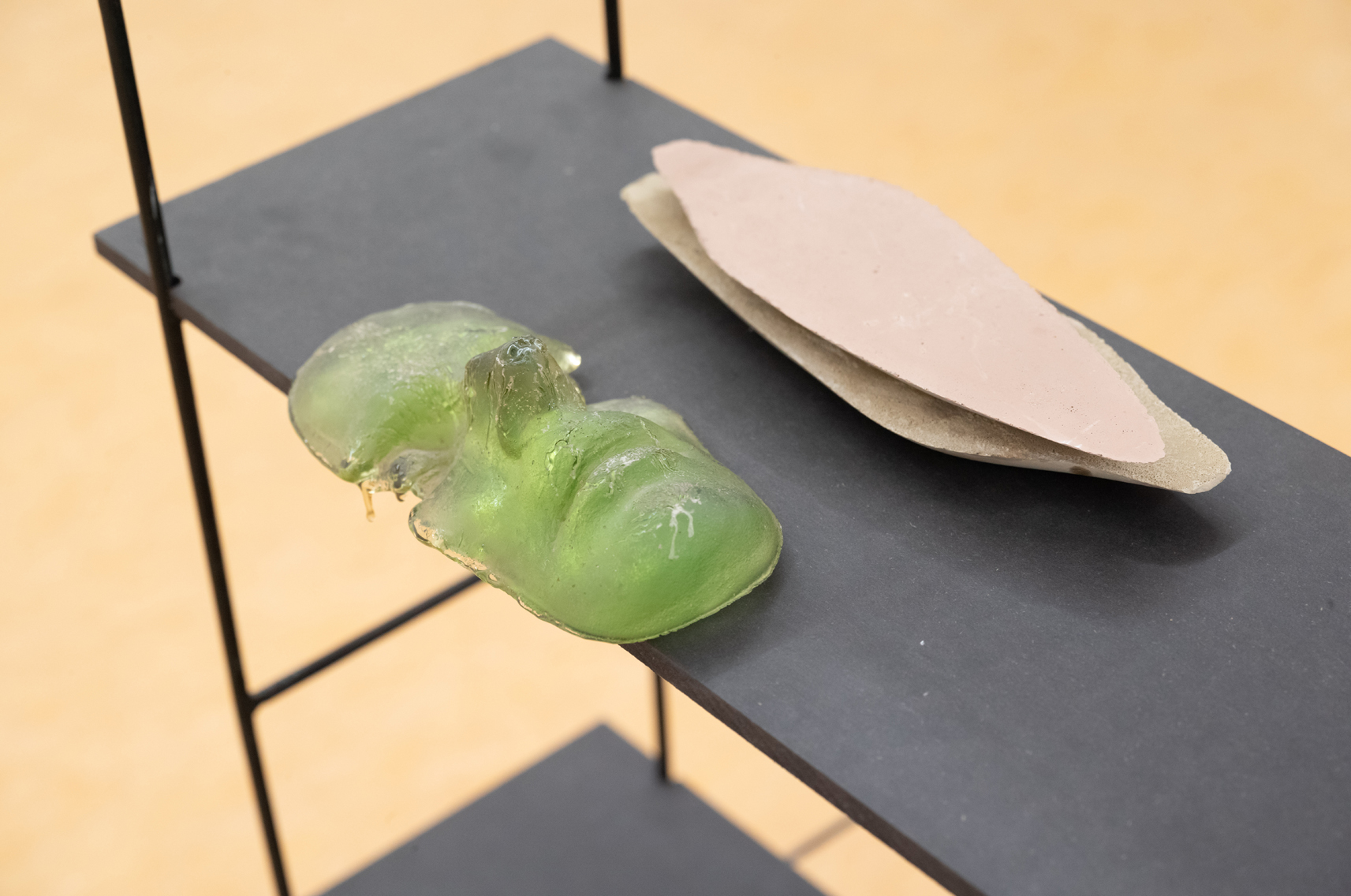
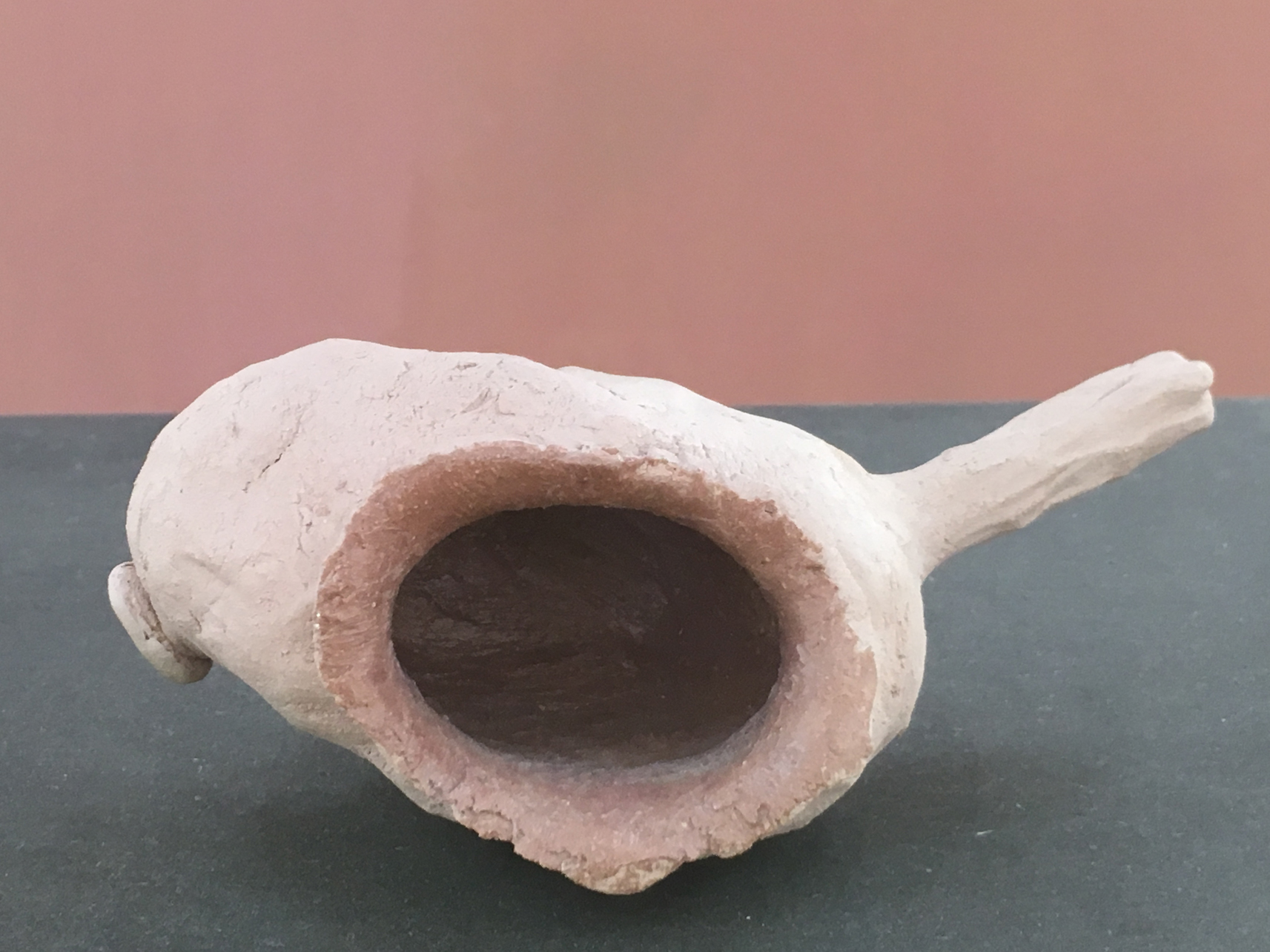
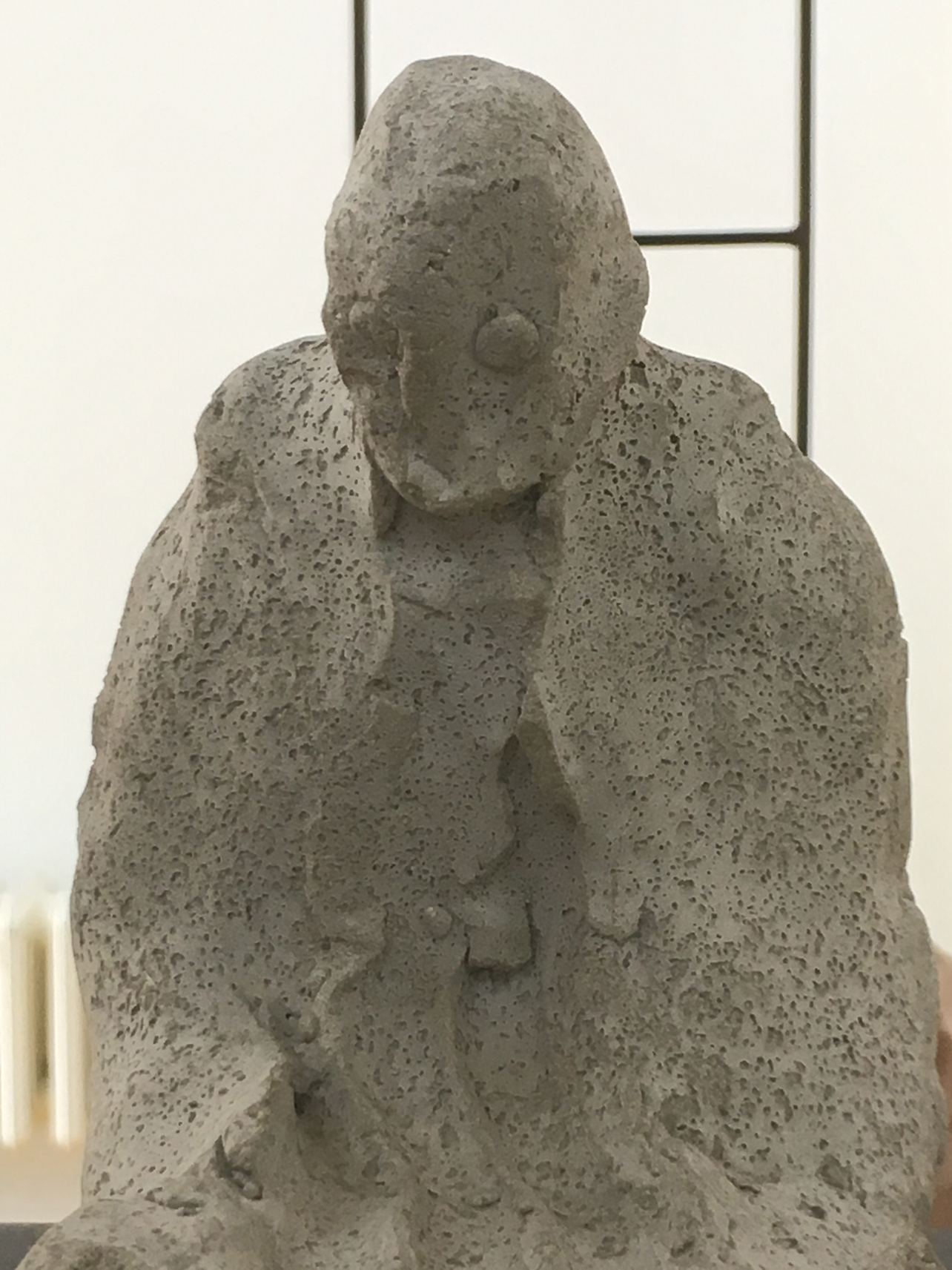

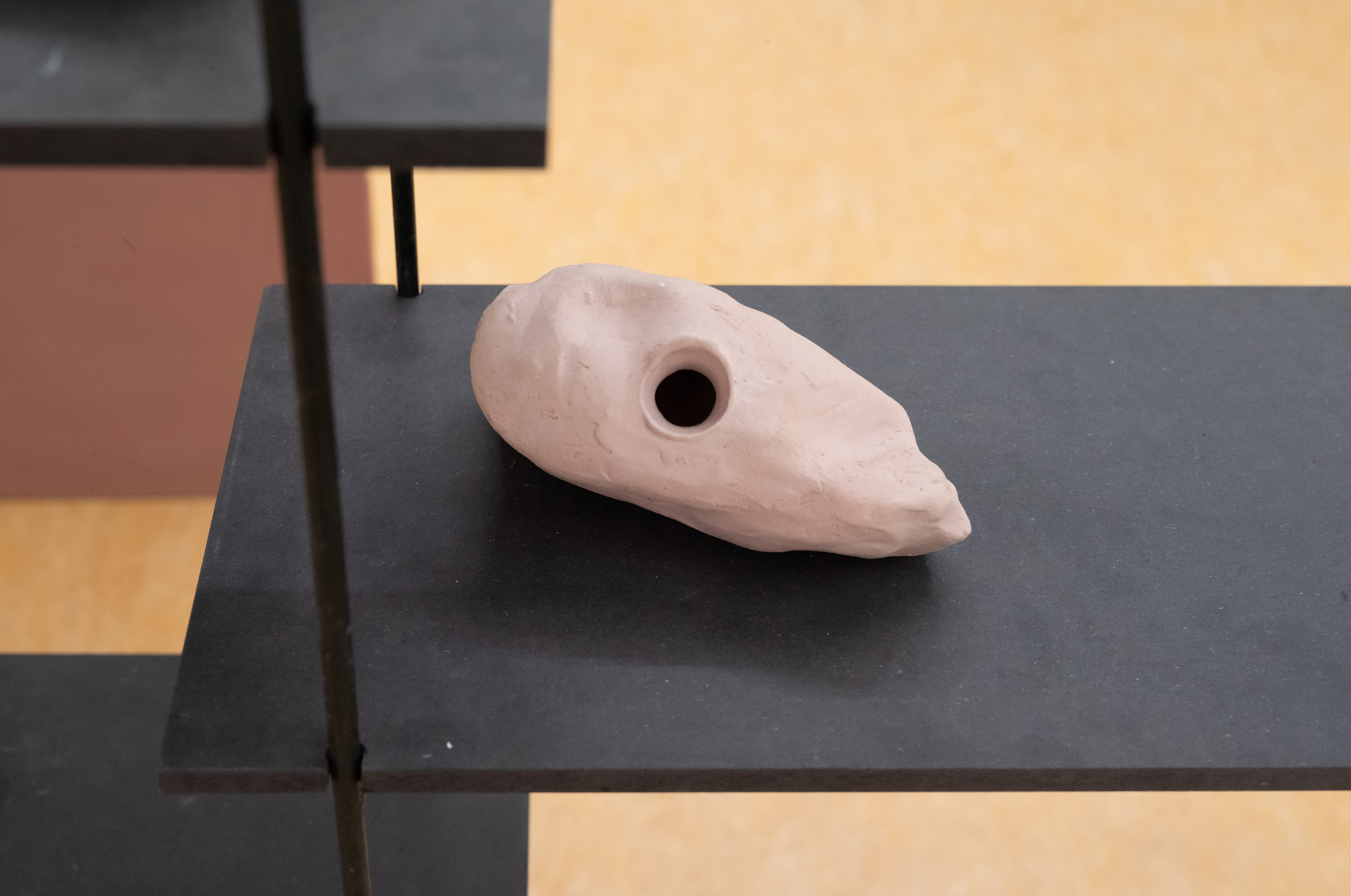
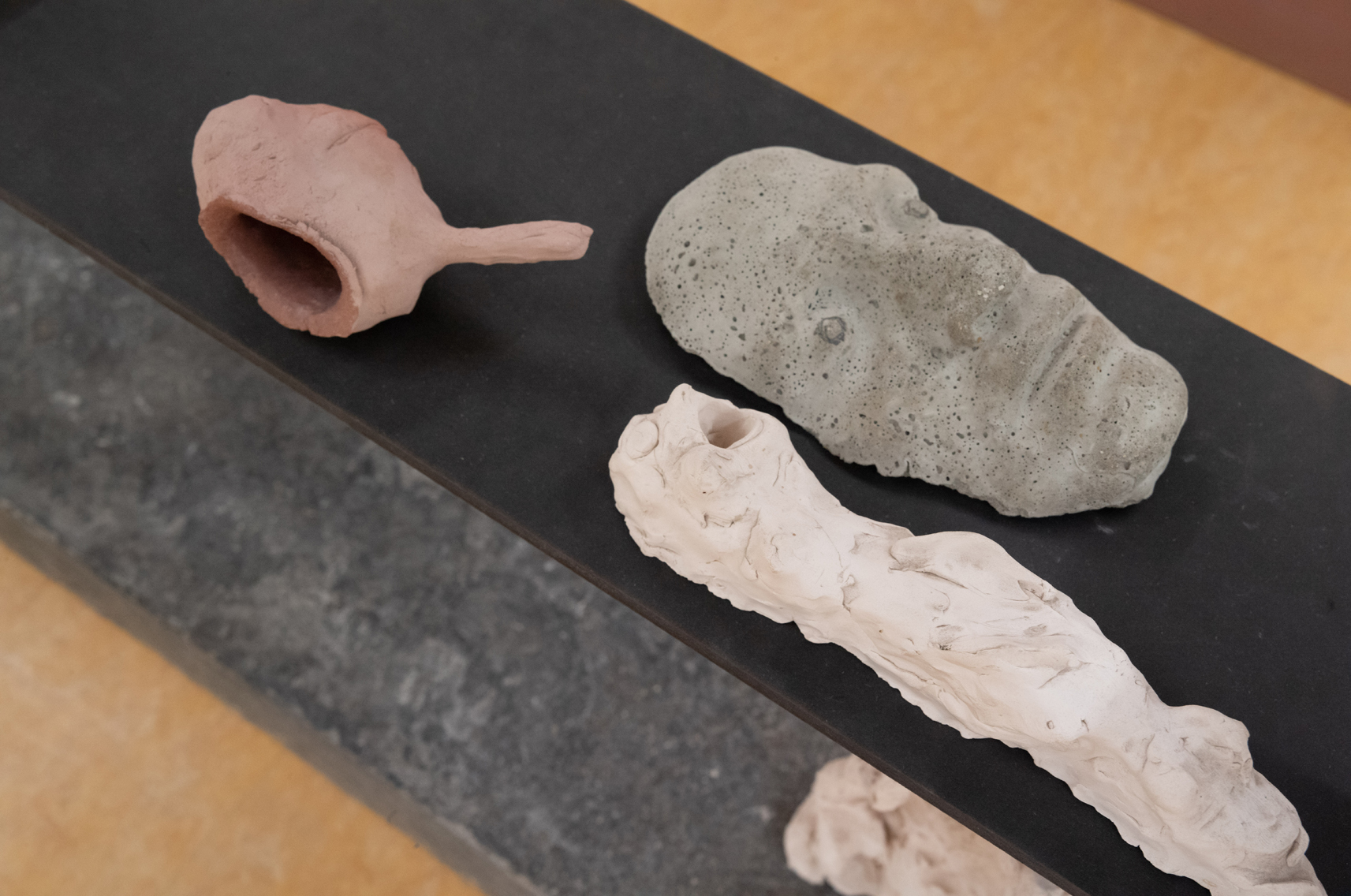
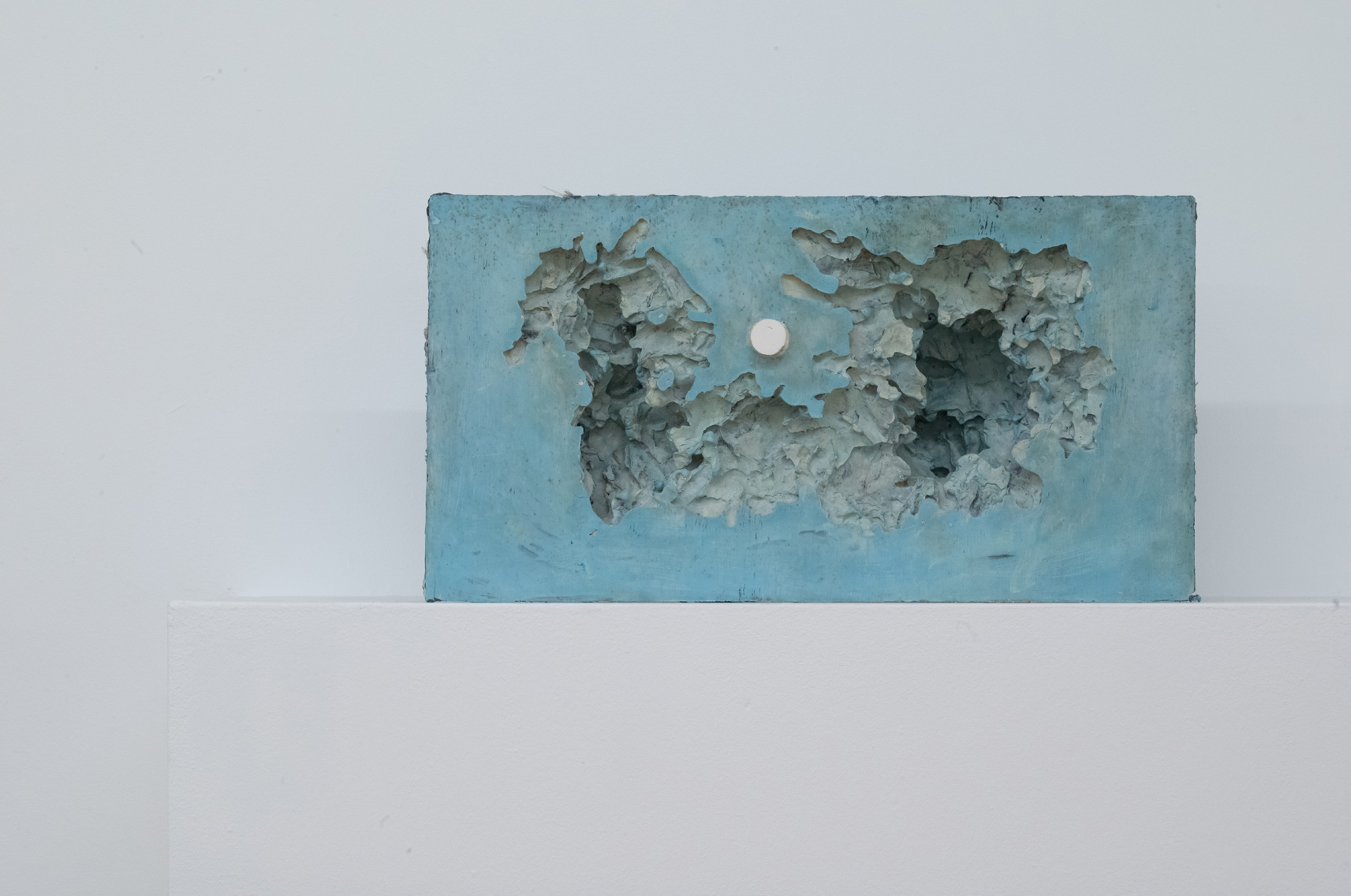
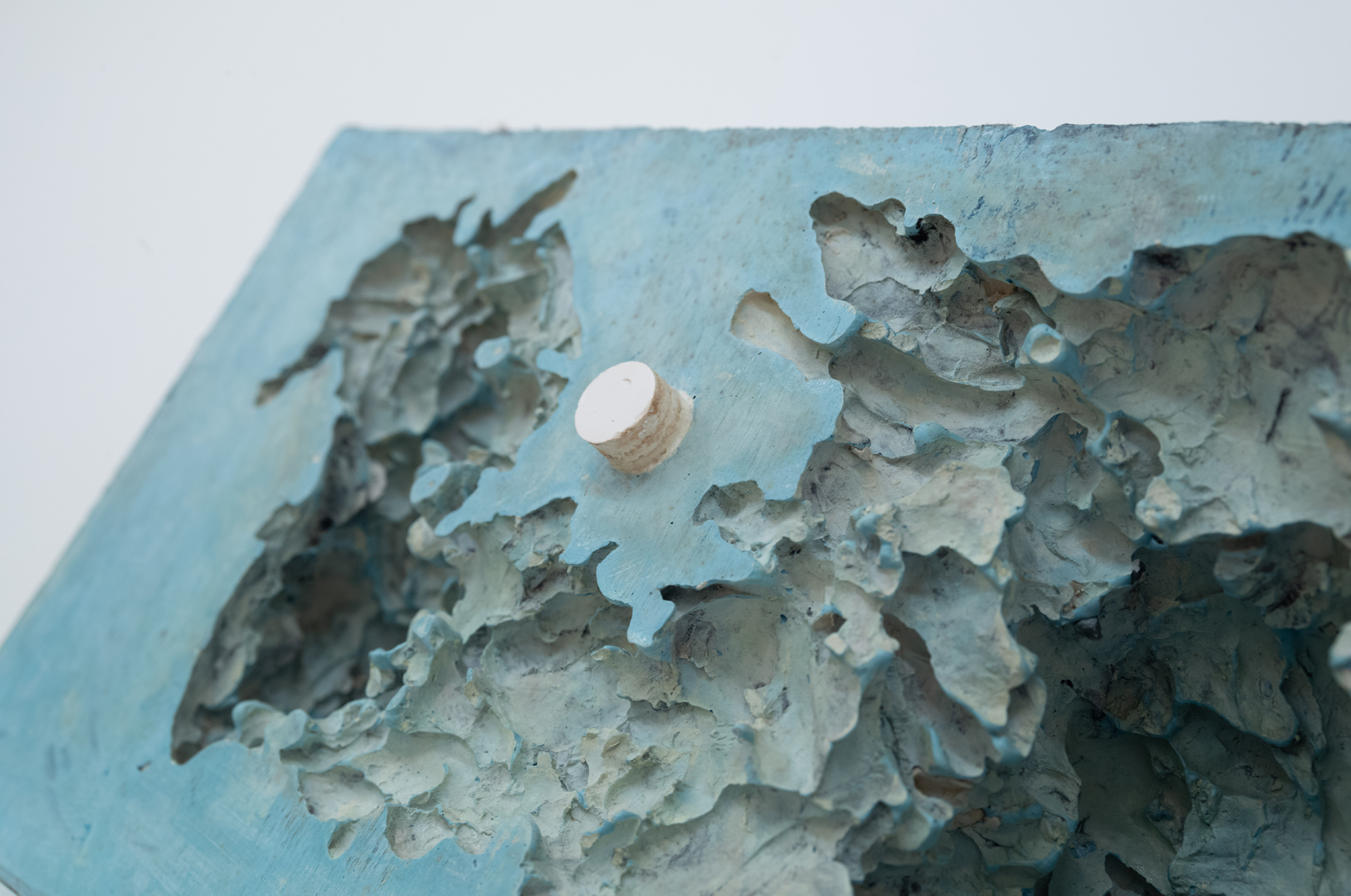
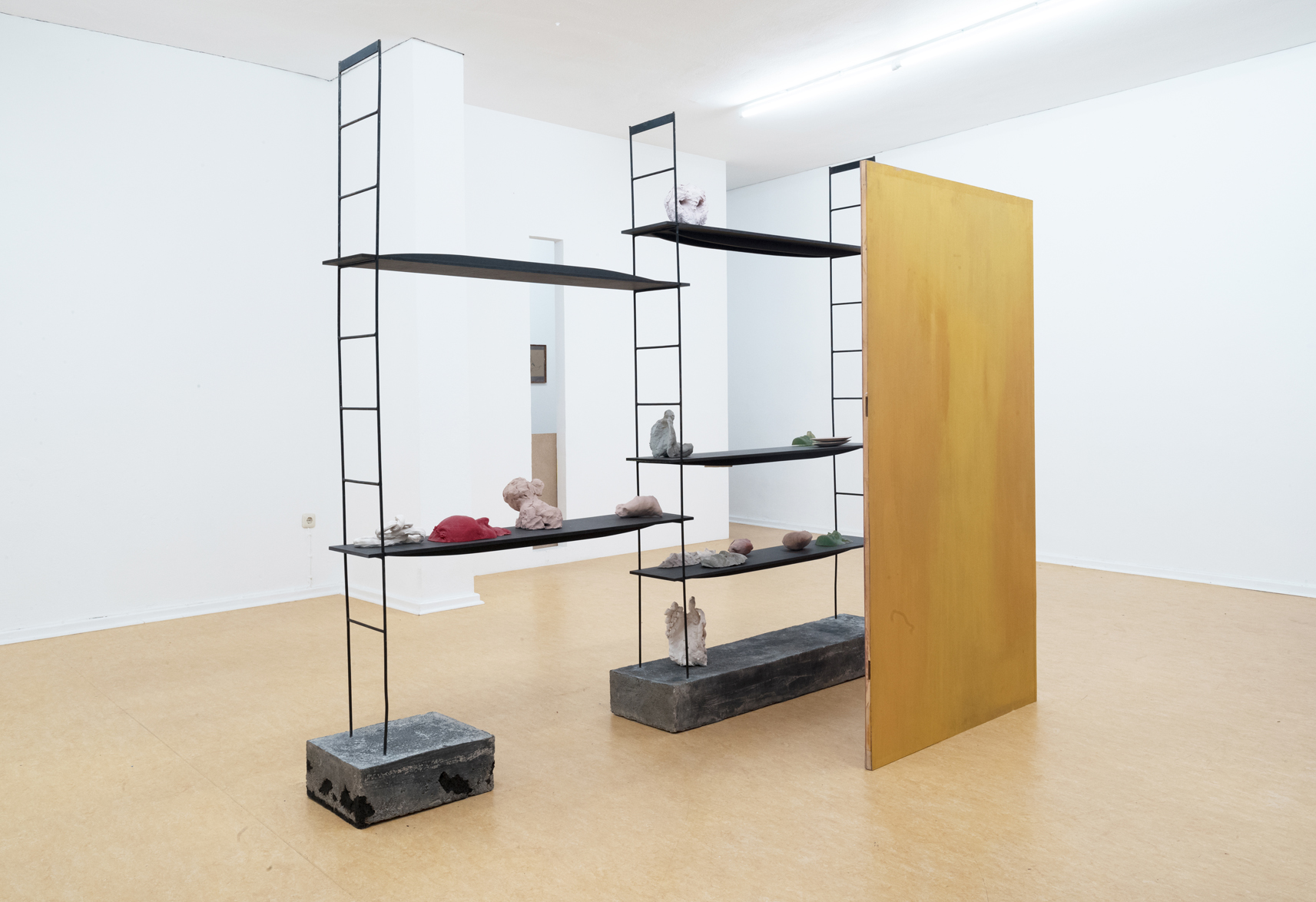
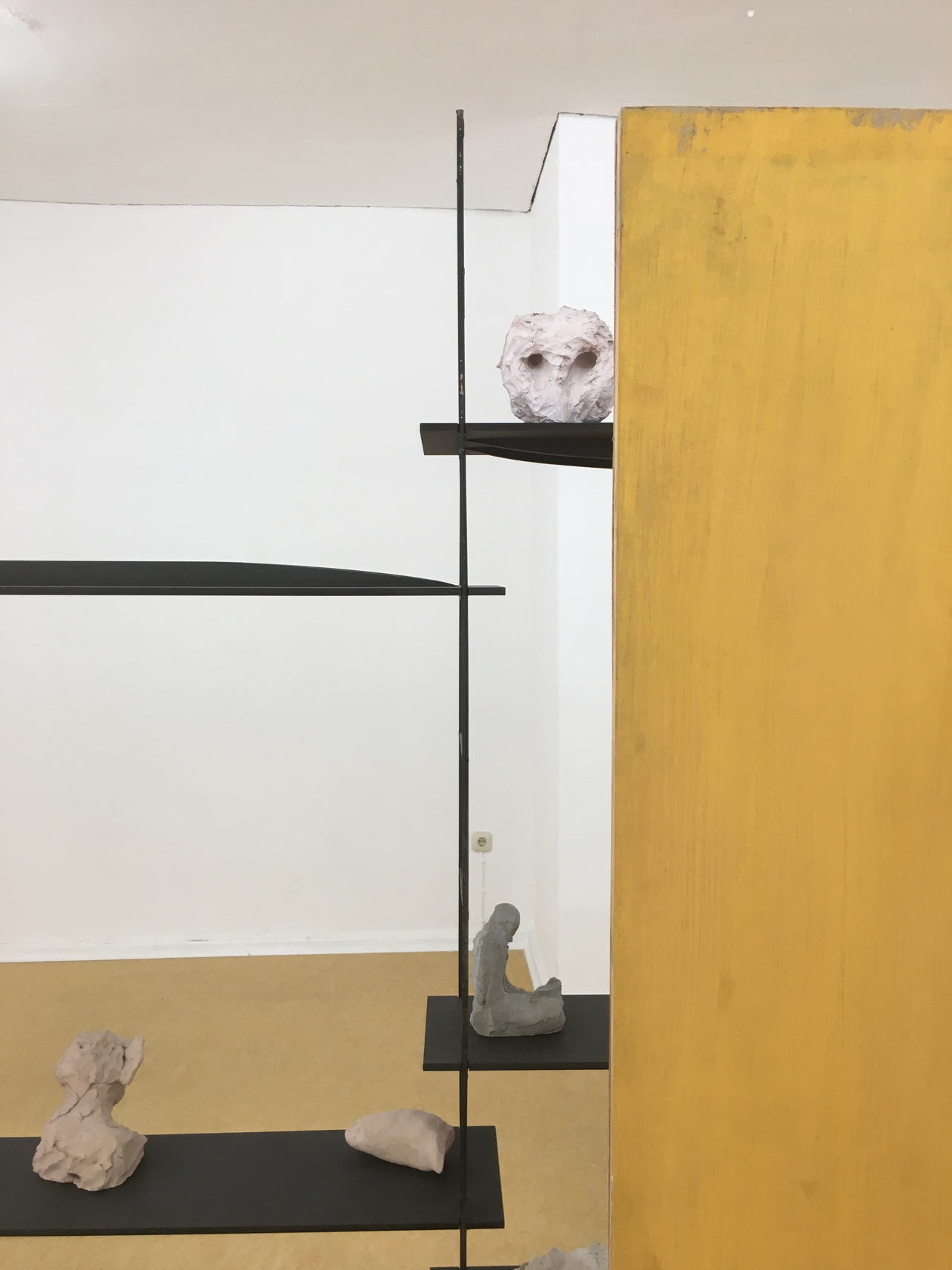
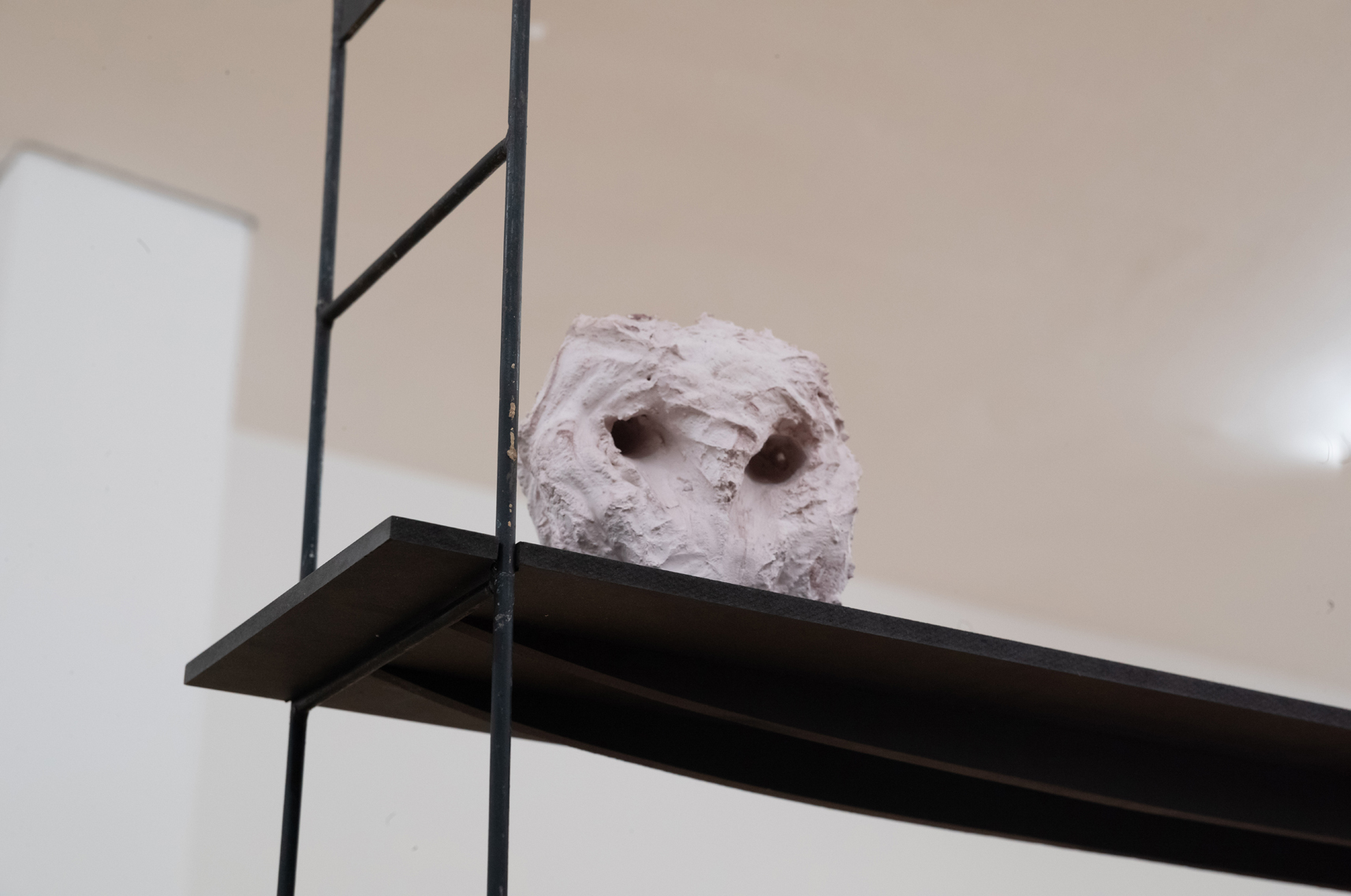
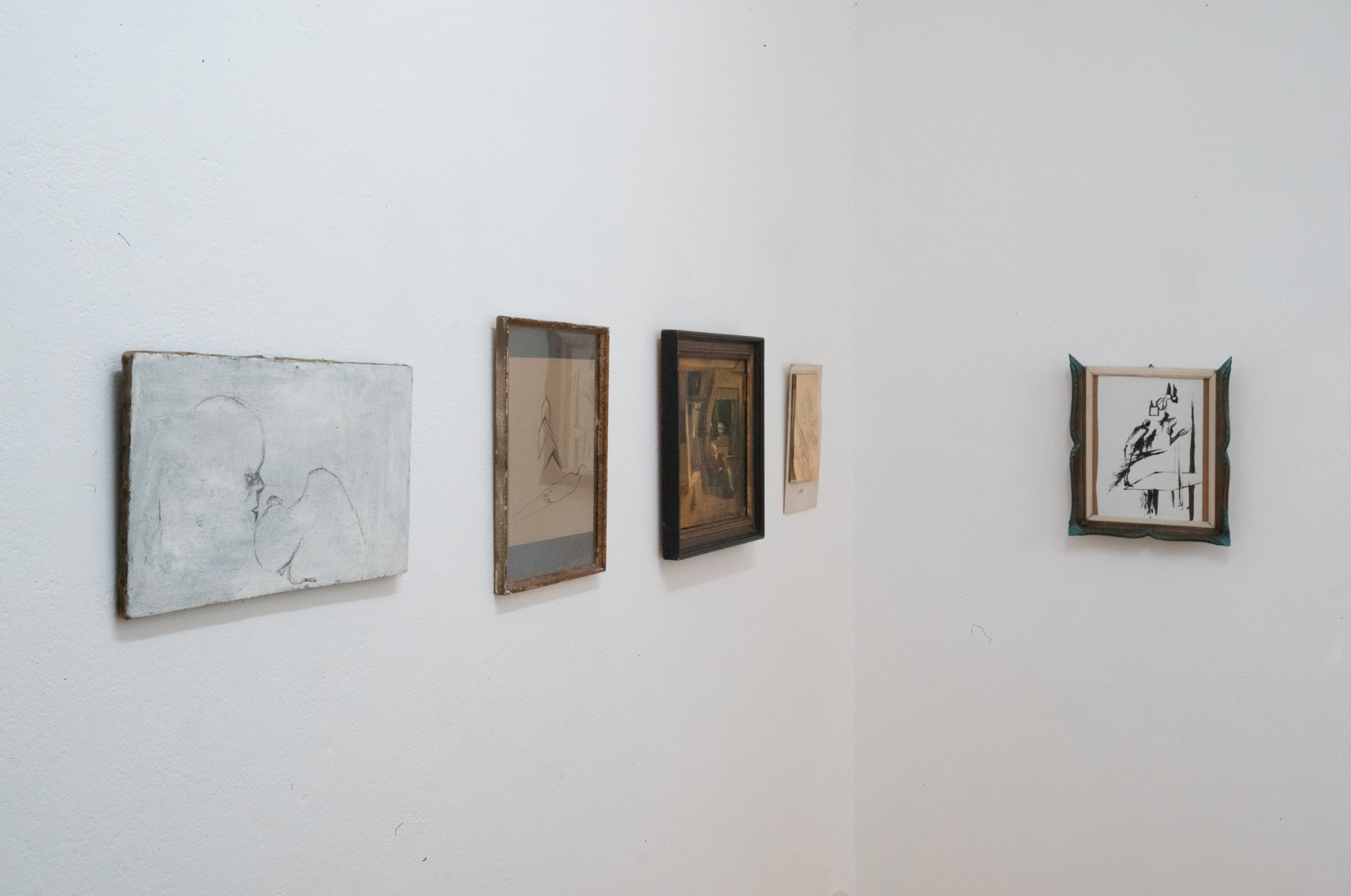
moon in the barn
Quirin Bäumler
7. September 2019
—
19. October 2019
//english version below//
moon in the barn ist die dritte Einzelausstellung von Quirin Bäumler bei KM. Wie kommt der Mond in die Scheune? Die Landung der Apollo 11 am 21. Juli 1969 um 3:56 Uhr MEZ veränderte Quirin Bäumlers Wahrnehmung der Erde. In der Hofscheune, von altem Holz, Stroh und Erde umgeben, sahen alle gemeinsam die direkt übertragene Mondlandung. Die Scheune war der einzige Ort an dem das Fernsehsignal von der Antenne sicher empfangen wurde. Alle sahen die ersten Menschen auf dem Mond und die Erde verwandelte ihr Aussehen. Von innen sah Quirin Bäumler das Aussen. So ist der Mond noch heute in dieser Scheune und weist auf eine kosmische Zukunft jenseits des warmen, nach Stroh riechenden Ortes unter dem der tiefe Keller nach Moder und Grab riecht. Seit diesem Erleben verfolgt der Künstler Übergänge von innen nach aussen. Wahrnehmungen verformt er zu Werken die einen Übergang abbilden. Der Künstler strukturiert den Ausstellungsraum durch seine Skulpturen rhythmisch zu einem Ort der „rites de passage“. Die Proportionen der einzelnen Objekte binden sich in die Raumarchitektur ein. Quirin Bäumlers Zeichnungen und Skulpturen sind Abstraktionen eines Gefühls, das sich im Raum befindet, wieder aufgerufen werden kann. So setzt er den Ausstellungsraum unter Spannung.
Im ersten Raum der Galerie arrangiert Bäumler in einem feingliedrigen Display eine Choreographie aus Skulpturen. Amorphe Körper, surreale und fabelhafte Wesen treten in einen Austausch. Dazwischen liegen mehrere Totenmasken, eine Abformung des Momentes, in dem der Mensch bereits in einen anderen Kosmos übergetreten sein mag. Der Mond aus der Scheune begegnet dem Betrachter immer wieder als Scheibe, die Himmel und Erde miteinander verbindet.
Die Skulpturen im zweiten Raum weisen auf die Erde zurück, zum Ursprung. Der ausgehöhlte Baumstamm ragt aus dem Boden heraus. Er stammt aus der Hofscheune und sein Zwilling aus Beton lag lange Jahre nicht weit entfernt auf dem Rasen. Schwer liegt der Stein im Raum und wirkt wie ein Torso. Der Mond taucht wieder auf, er ist der Erde nahe gekommen. Eine Lampe erleuchtet eine kreisförmige Oberfläche, die aus der Wand hinauswächst. Die Spiegelung im Lampenschirm fängt eine weitere Scheibe ein. Die Werke von Quirin Bäumler konfrontieren uns mit Reisen über Grenzen hinweg und sprechen von Achtsamkeit und der Kraft der Verwandlung.
/E/
"moon in the barn" is Quirin Bäumler’s third solo exhibition at KM, Berlin.
How does the moon get into the barn? The landing of Apollo 11 on July 21, 1969, at 3:56 CET changed the way Quirin Bäumler perceived the earth. In the farm’s barn, surrounded by wood, hay and soil, they all watched the live broadcast of the moon landing together. The barn was the only place where the antenna could reliably receive the TV signal. Everyone saw the first men on the moon, and the earth’s appearance changed. Quirin Bäumler perceived the outside from inside. Therefore, the moon is still in the barn today and points to a cosmic future beyond the warm place smelling of hay under which the deep cellar reeks of moldiness and graveyard. Since this experience, the artist has been on the track of transitions from inside to outside. He reshapes perceptions to create artworks that depict transitions. The artist rhythmically structures the gallery space with his sculptures, making it a site for “rites de passage.” The proportions of the individual objects tie into the architecture of the space. Quirin Bäumler’s drawings and sculptures are abstractions of a feeling that exists in the space and can be invoked again. In this way, he thus energizing the gallery.
In the first room, Bäumler choreographs sculptures in a delicate display. Amorphous bodies, surreal and fabulous creatures enter into an exchange. Interspersed are several death masks, castings of a moment in which the human may have already passed into another cosmos. Viewers repeatedly encounter the moon from the barn as a disk connecting heaven and earth.
The sculptures in the second room refer back to earth, to the origin. The hollowed-out tree trunk rises from the floor. It is from the barn, and its twin made of concrete was lying close by on the lawn for years. The stone lies heavily in the room and gives the impression of a torso. The moon reappears, having come closer to the earth. A lamp illuminates a circular surface growing out of the wall. The reflection on the lampshade captures a further disk. The works of Quirin Bäumler confront us with journeys across frontiers, conveying attentiveness and the power of transformation.
moon in the barn ist die dritte Einzelausstellung von Quirin Bäumler bei KM. Wie kommt der Mond in die Scheune? Die Landung der Apollo 11 am 21. Juli 1969 um 3:56 Uhr MEZ veränderte Quirin Bäumlers Wahrnehmung der Erde. In der Hofscheune, von altem Holz, Stroh und Erde umgeben, sahen alle gemeinsam die direkt übertragene Mondlandung. Die Scheune war der einzige Ort an dem das Fernsehsignal von der Antenne sicher empfangen wurde. Alle sahen die ersten Menschen auf dem Mond und die Erde verwandelte ihr Aussehen. Von innen sah Quirin Bäumler das Aussen. So ist der Mond noch heute in dieser Scheune und weist auf eine kosmische Zukunft jenseits des warmen, nach Stroh riechenden Ortes unter dem der tiefe Keller nach Moder und Grab riecht. Seit diesem Erleben verfolgt der Künstler Übergänge von innen nach aussen. Wahrnehmungen verformt er zu Werken die einen Übergang abbilden. Der Künstler strukturiert den Ausstellungsraum durch seine Skulpturen rhythmisch zu einem Ort der „rites de passage“. Die Proportionen der einzelnen Objekte binden sich in die Raumarchitektur ein. Quirin Bäumlers Zeichnungen und Skulpturen sind Abstraktionen eines Gefühls, das sich im Raum befindet, wieder aufgerufen werden kann. So setzt er den Ausstellungsraum unter Spannung.
Im ersten Raum der Galerie arrangiert Bäumler in einem feingliedrigen Display eine Choreographie aus Skulpturen. Amorphe Körper, surreale und fabelhafte Wesen treten in einen Austausch. Dazwischen liegen mehrere Totenmasken, eine Abformung des Momentes, in dem der Mensch bereits in einen anderen Kosmos übergetreten sein mag. Der Mond aus der Scheune begegnet dem Betrachter immer wieder als Scheibe, die Himmel und Erde miteinander verbindet.
Die Skulpturen im zweiten Raum weisen auf die Erde zurück, zum Ursprung. Der ausgehöhlte Baumstamm ragt aus dem Boden heraus. Er stammt aus der Hofscheune und sein Zwilling aus Beton lag lange Jahre nicht weit entfernt auf dem Rasen. Schwer liegt der Stein im Raum und wirkt wie ein Torso. Der Mond taucht wieder auf, er ist der Erde nahe gekommen. Eine Lampe erleuchtet eine kreisförmige Oberfläche, die aus der Wand hinauswächst. Die Spiegelung im Lampenschirm fängt eine weitere Scheibe ein. Die Werke von Quirin Bäumler konfrontieren uns mit Reisen über Grenzen hinweg und sprechen von Achtsamkeit und der Kraft der Verwandlung.
/E/
"moon in the barn" is Quirin Bäumler’s third solo exhibition at KM, Berlin.
How does the moon get into the barn? The landing of Apollo 11 on July 21, 1969, at 3:56 CET changed the way Quirin Bäumler perceived the earth. In the farm’s barn, surrounded by wood, hay and soil, they all watched the live broadcast of the moon landing together. The barn was the only place where the antenna could reliably receive the TV signal. Everyone saw the first men on the moon, and the earth’s appearance changed. Quirin Bäumler perceived the outside from inside. Therefore, the moon is still in the barn today and points to a cosmic future beyond the warm place smelling of hay under which the deep cellar reeks of moldiness and graveyard. Since this experience, the artist has been on the track of transitions from inside to outside. He reshapes perceptions to create artworks that depict transitions. The artist rhythmically structures the gallery space with his sculptures, making it a site for “rites de passage.” The proportions of the individual objects tie into the architecture of the space. Quirin Bäumler’s drawings and sculptures are abstractions of a feeling that exists in the space and can be invoked again. In this way, he thus energizing the gallery.
In the first room, Bäumler choreographs sculptures in a delicate display. Amorphous bodies, surreal and fabulous creatures enter into an exchange. Interspersed are several death masks, castings of a moment in which the human may have already passed into another cosmos. Viewers repeatedly encounter the moon from the barn as a disk connecting heaven and earth.
The sculptures in the second room refer back to earth, to the origin. The hollowed-out tree trunk rises from the floor. It is from the barn, and its twin made of concrete was lying close by on the lawn for years. The stone lies heavily in the room and gives the impression of a torso. The moon reappears, having come closer to the earth. A lamp illuminates a circular surface growing out of the wall. The reflection on the lampshade captures a further disk. The works of Quirin Bäumler confront us with journeys across frontiers, conveying attentiveness and the power of transformation.